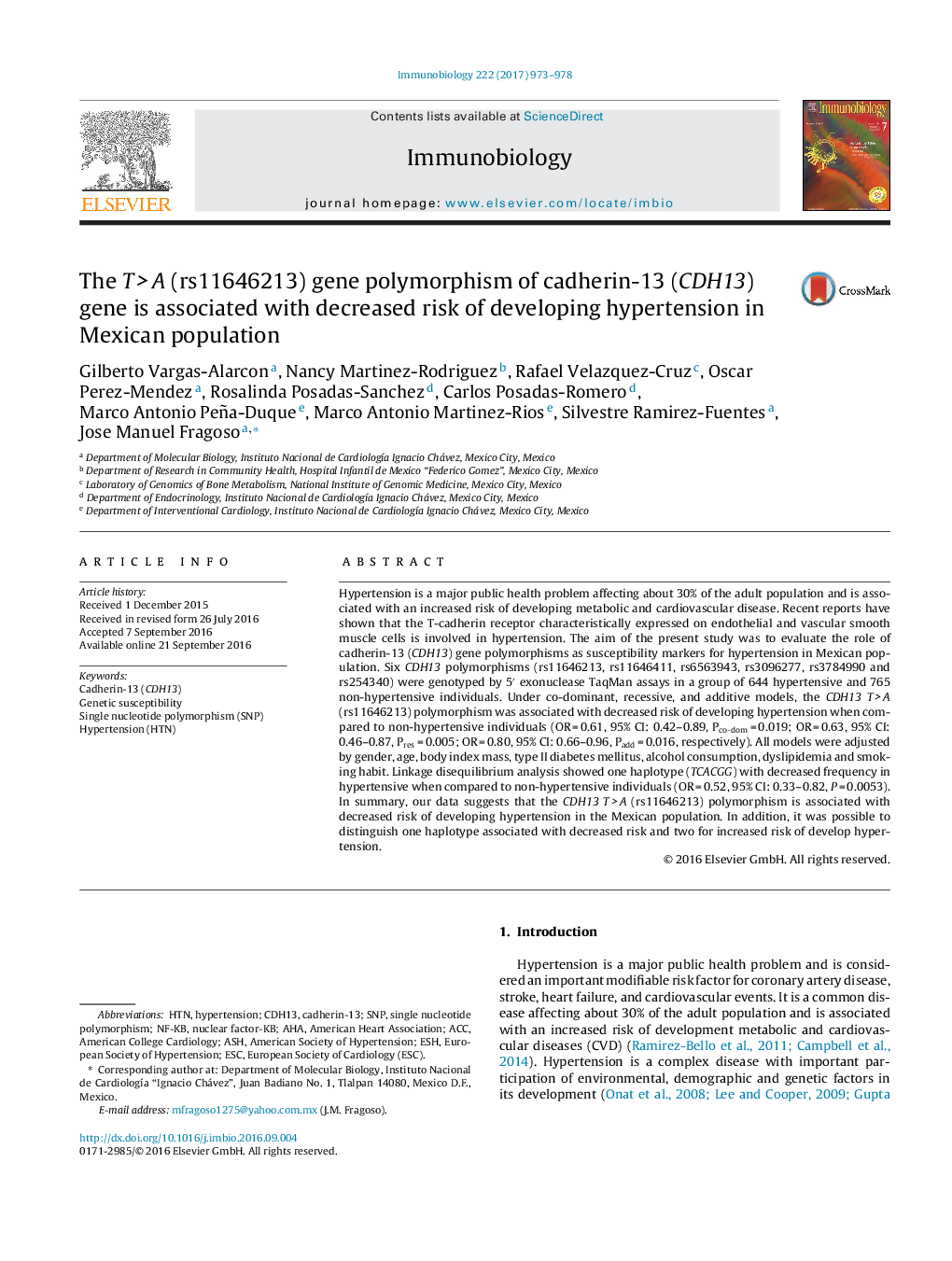| Article ID | Journal | Published Year | Pages | File Type |
|---|---|---|---|---|
| 5533137 | Immunobiology | 2017 | 6 Pages |
â¢The CDH13âT/A (rs11646213) polymorphism is associated with decreased risk of developing hypertension.â¢The “TT” genotype, under co-dominant, recessive and additive models was associated with decreased risk of developing hypertension.â¢The TCACGG haplotype decreased risk of developing hypertension (OR = 0.52, P = 0.0053).
Hypertension is a major public health problem affecting about 30% of the adult population and is associated with an increased risk of developing metabolic and cardiovascular disease. Recent reports have shown that the T-cadherin receptor characteristically expressed on endothelial and vascular smooth muscle cells is involved in hypertension. The aim of the present study was to evaluate the role of cadherin-13 (CDH13) gene polymorphisms as susceptibility markers for hypertension in Mexican population. Six CDH13 polymorphisms (rs11646213, rs11646411, rs6563943, rs3096277, rs3784990 and rs254340) were genotyped by 5Ⲡexonuclease TaqMan assays in a group of 644 hypertensive and 765 non-hypertensive individuals. Under co-dominant, recessive, and additive models, the CDH13 T > A (rs11646213) polymorphism was associated with decreased risk of developing hypertension when compared to non-hypertensive individuals (OR = 0.61, 95% CI: 0.42-0.89, Pco-dom = 0.019; OR = 0.63, 95% CI: 0.46-0.87, Pres = 0.005; OR = 0.80, 95% CI: 0.66-0.96, Padd = 0.016, respectively). All models were adjusted by gender, age, body index mass, type II diabetes mellitus, alcohol consumption, dyslipidemia and smoking habit. Linkage disequilibrium analysis showed one haplotype (TCACGG) with decreased frequency in hypertensive when compared to non-hypertensive individuals (OR = 0.52, 95% CI: 0.33-0.82, P = 0.0053). In summary, our data suggests that the CDH13 T > A (rs11646213) polymorphism is associated with decreased risk of developing hypertension in the Mexican population. In addition, it was possible to distinguish one haplotype associated with decreased risk and two for increased risk of develop hypertension.
